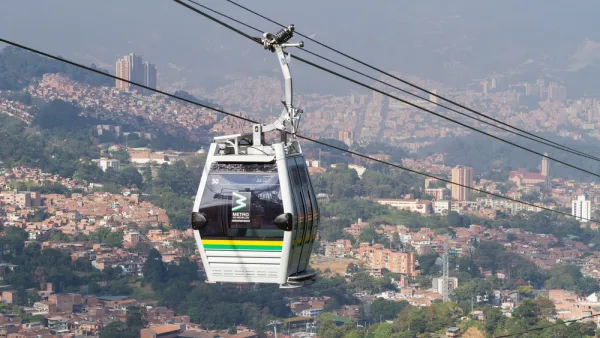Josh Stephens muses on the modern state of an erstwhile global capital that has kept its aesthetic charms, but lost its anima.
Once the beating heart of commerce, art, and culture across the globe, Venice will never lose the charm of its physical spaces. The basic density and walkability underlying the design of the city evoke images of bustling Renaissance street life. But with roughly three million tourists passing through each year – more than ten times the number of permanent residents – the experience of the city can feel a little artificial, laments Stephens (who estimates a tourism figure almost six times higher).
"What's strange about Venice is that it is still, technically, a city, with residents, an economy and a government," he writes. "And yet, perhaps nowhere else in the world does the relationship past and present fall so surreally, credulously out of balance."
While some have likened Venice to a museum, Stephens prefers the image of an amusement park. Perhaps more relevantly, he argues that recognizing the beauty and the strengths of our own existing spaces is the key to having them serve us as well as Venice once served its own people.
"You can still visit a million live cities and still believe that their best days are ahead of them. And you can believe that you can be a part of them. That goes as much for historical giants like Paris and London as it does for upstarts like Dubai and Bangalore. For all of the challenges in the U.S., it applies to nearly every American city."
FULL STORY: City, Museum or Amusement Park? The Problem With Venice

Planetizen Federal Action Tracker
A weekly monitor of how Trump’s orders and actions are impacting planners and planning in America.

Chicago’s Ghost Rails
Just beneath the surface of the modern city lie the remnants of its expansive early 20th-century streetcar system.

Amtrak Cutting Jobs, Funding to High-Speed Rail
The agency plans to cut 10 percent of its workforce and has confirmed it will not fund new high-speed rail projects.

Ohio Forces Data Centers to Prepay for Power
Utilities are calling on states to hold data center operators responsible for new energy demands to prevent leaving consumers on the hook for their bills.

MARTA CEO Steps Down Amid Citizenship Concerns
MARTA’s board announced Thursday that its chief, who is from Canada, is resigning due to questions about his immigration status.

Silicon Valley ‘Bike Superhighway’ Awarded $14M State Grant
A Caltrans grant brings the 10-mile Central Bikeway project connecting Santa Clara and East San Jose closer to fruition.
Urban Design for Planners 1: Software Tools
This six-course series explores essential urban design concepts using open source software and equips planners with the tools they need to participate fully in the urban design process.
Planning for Universal Design
Learn the tools for implementing Universal Design in planning regulations.
Caltrans
City of Fort Worth
Mpact (founded as Rail~Volution)
City of Camden Redevelopment Agency
City of Astoria
City of Portland
City of Laramie



























